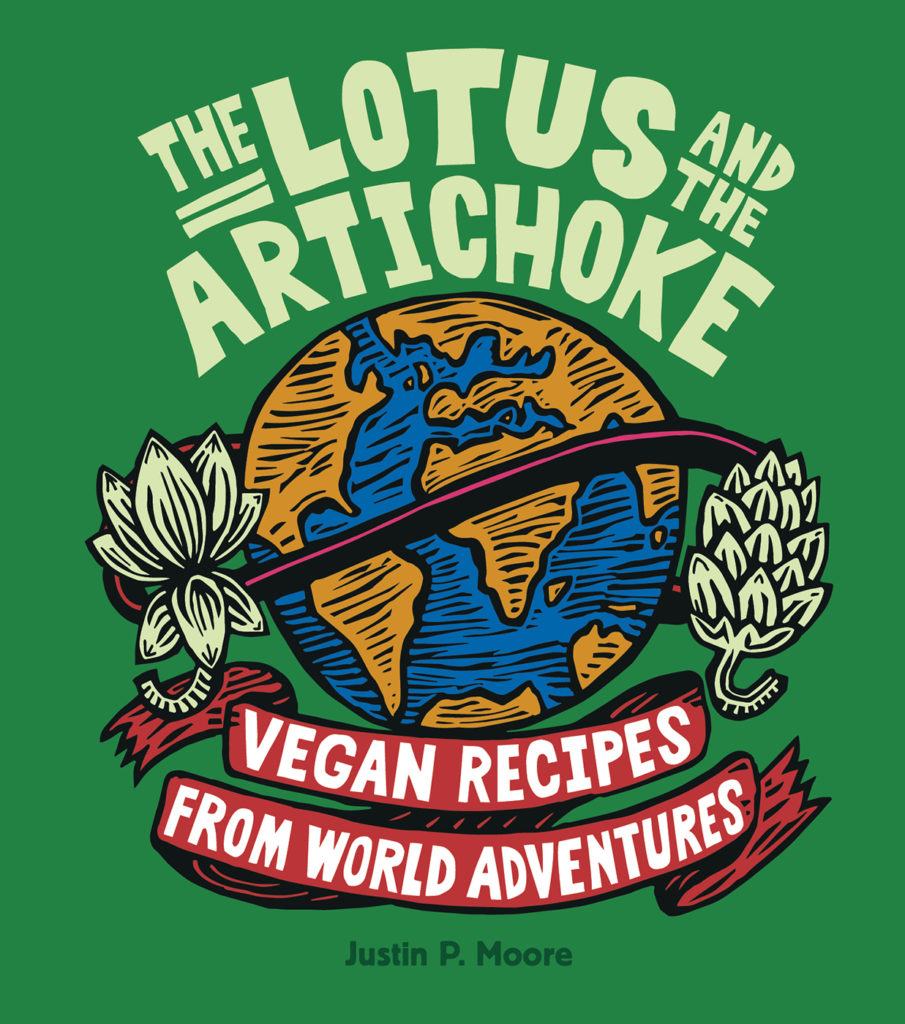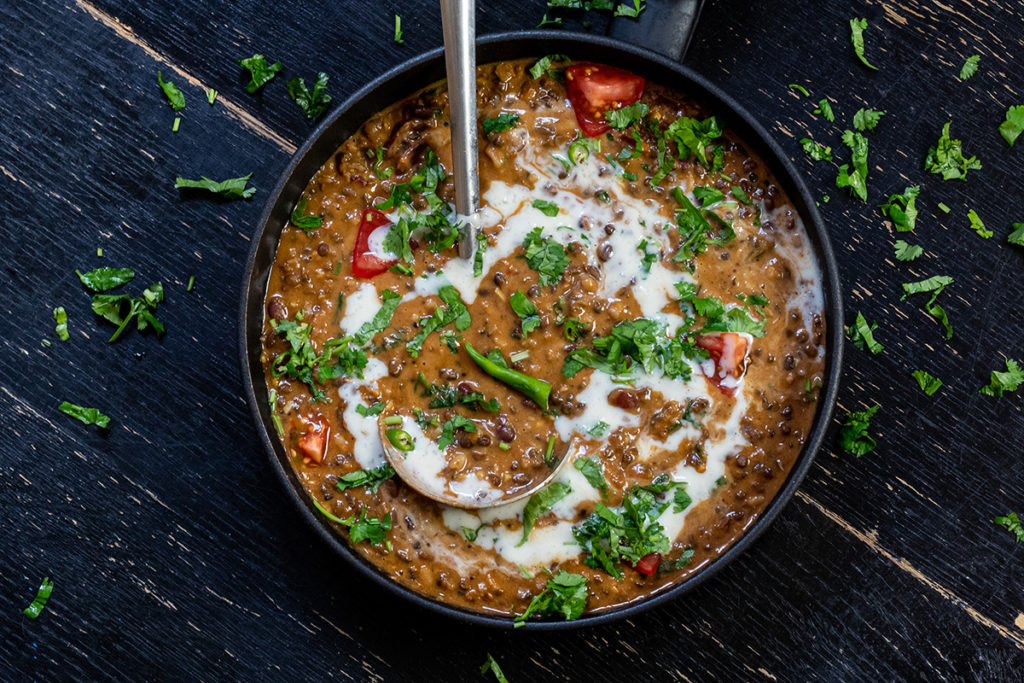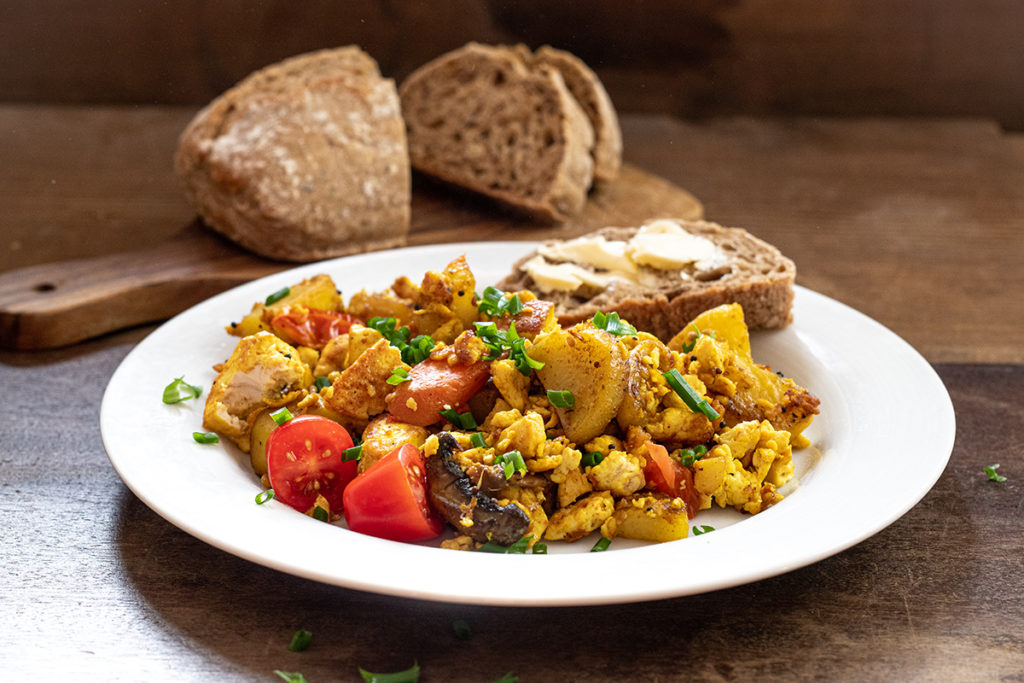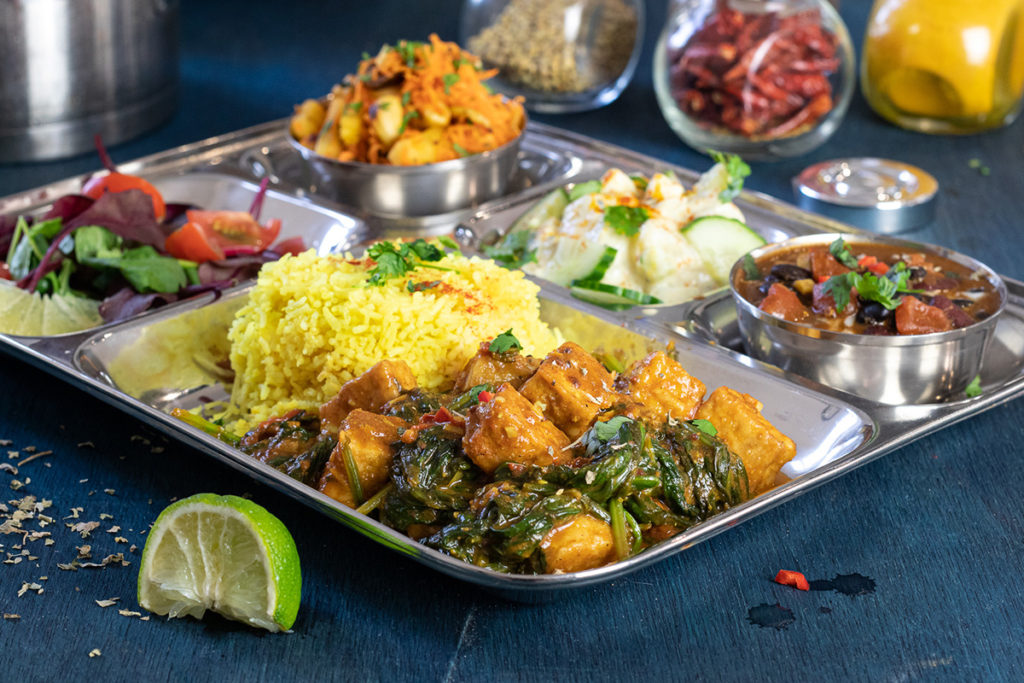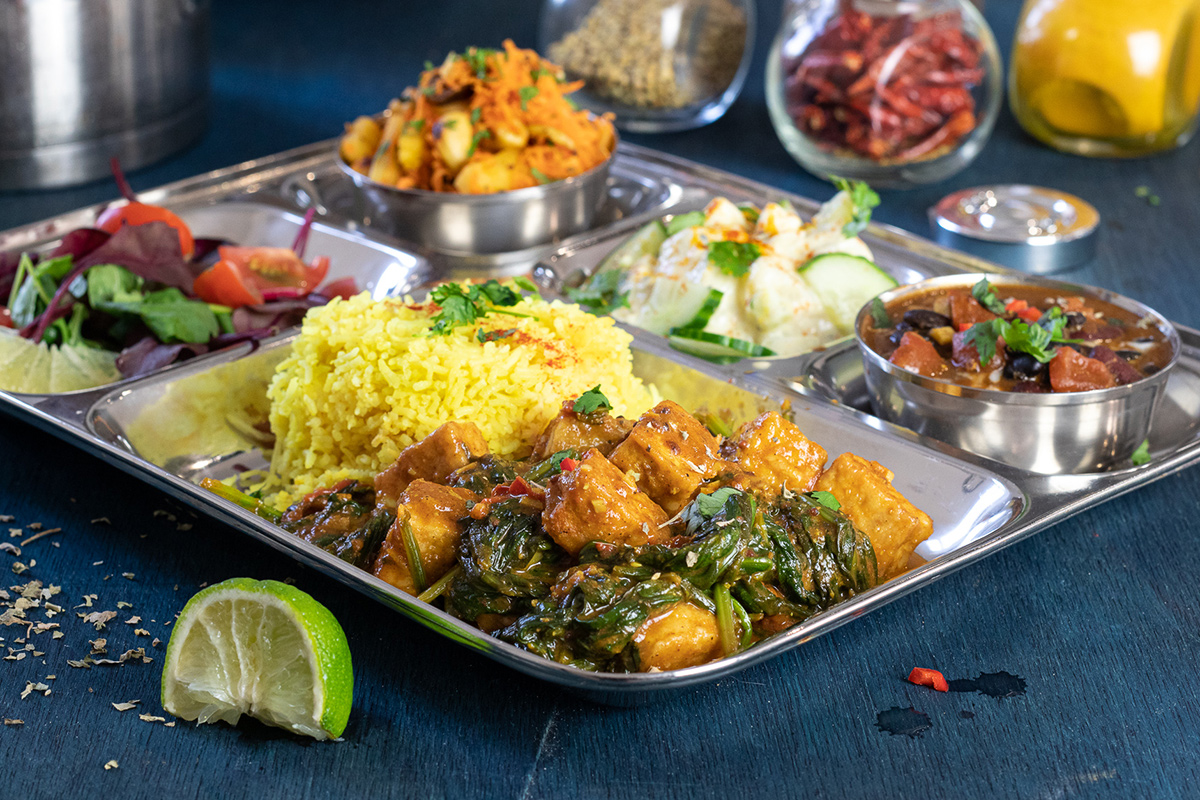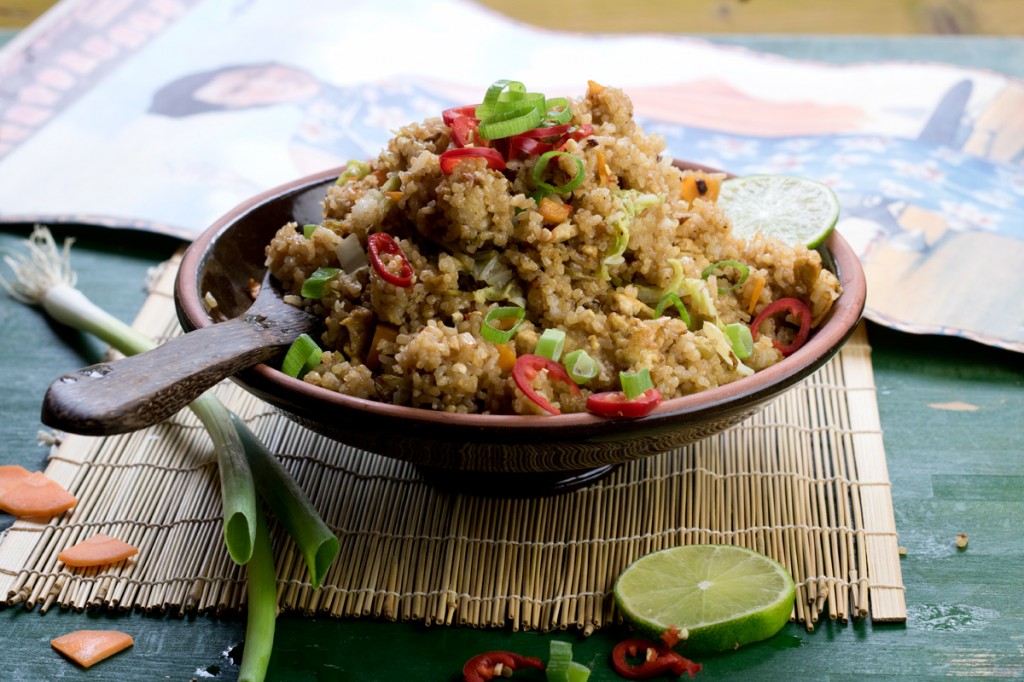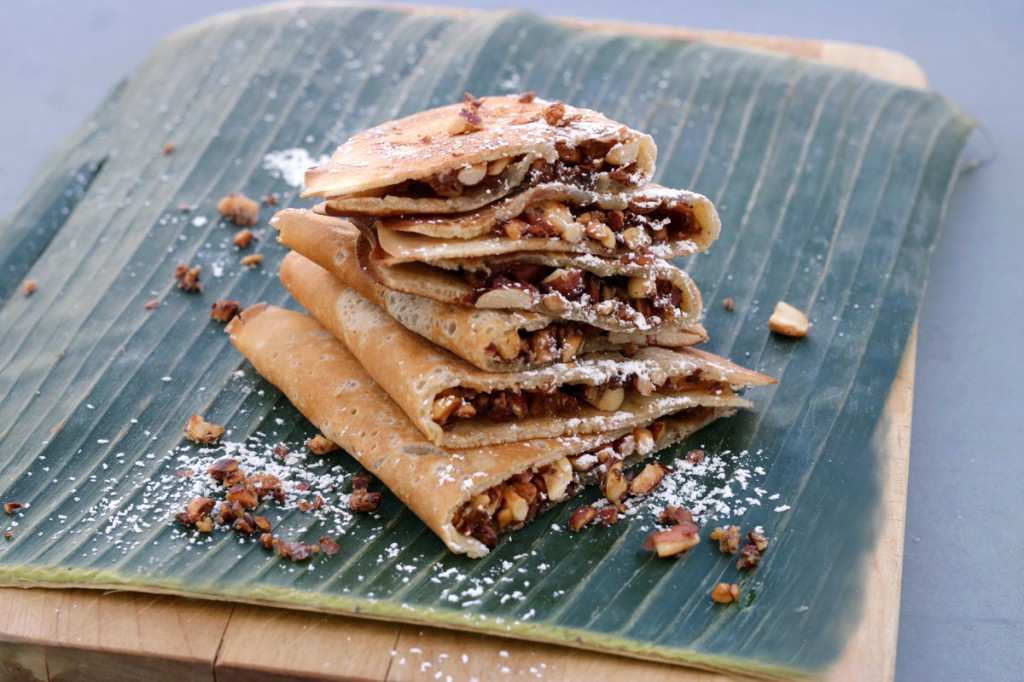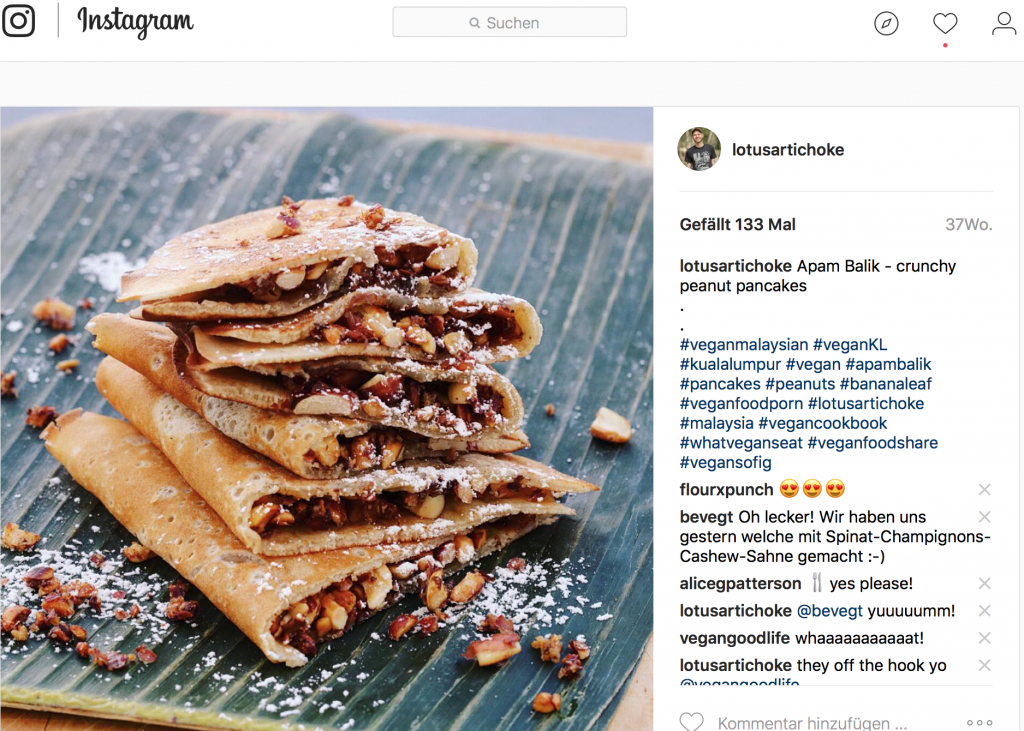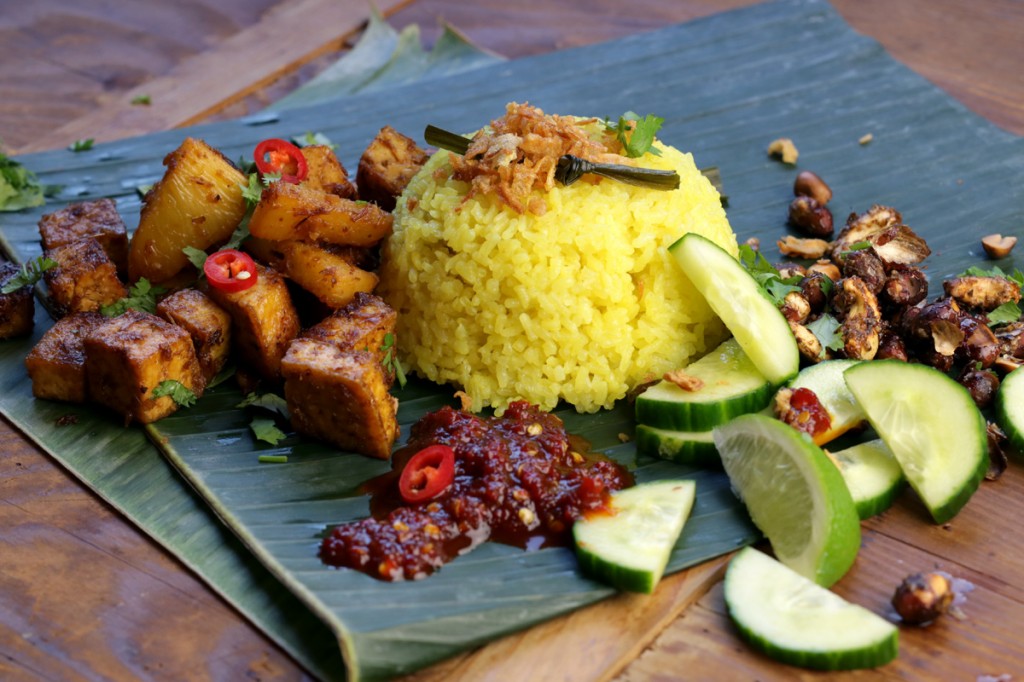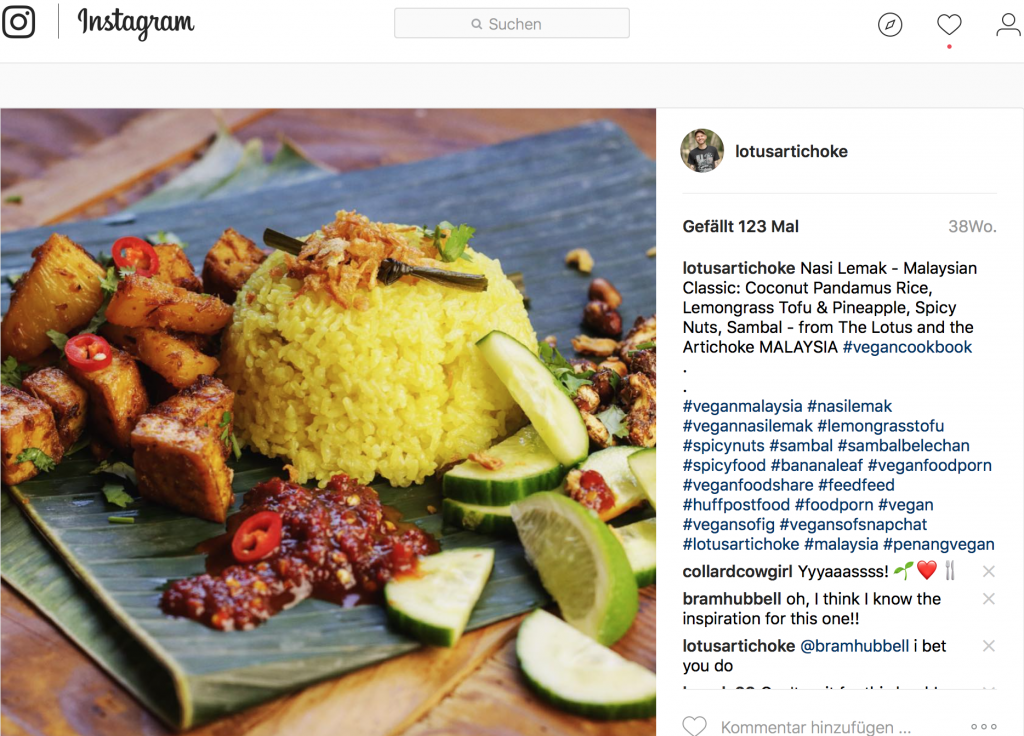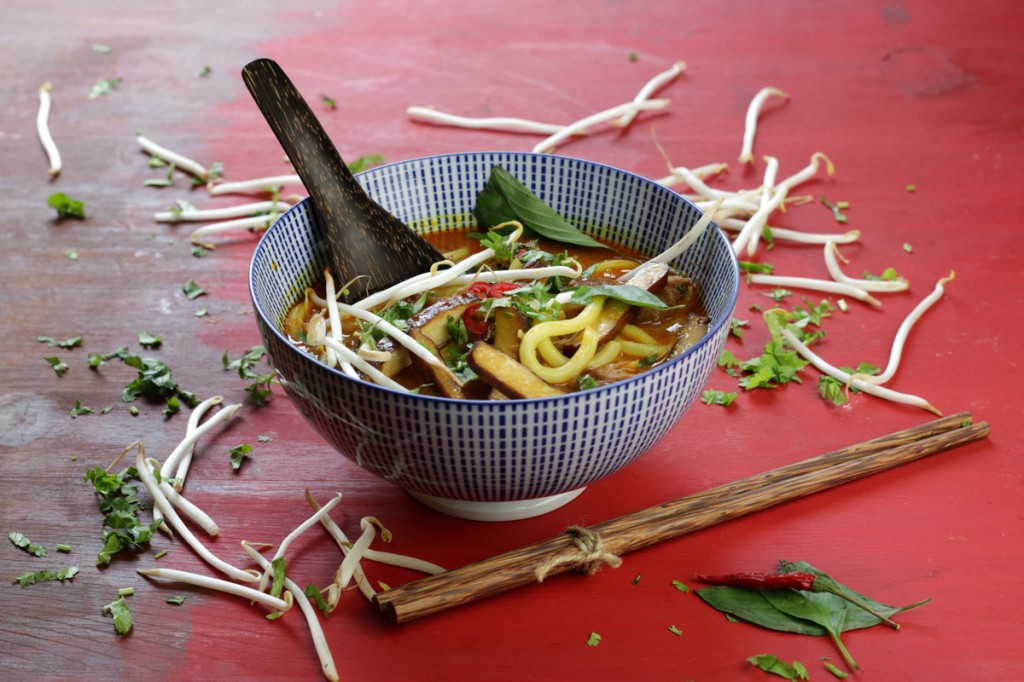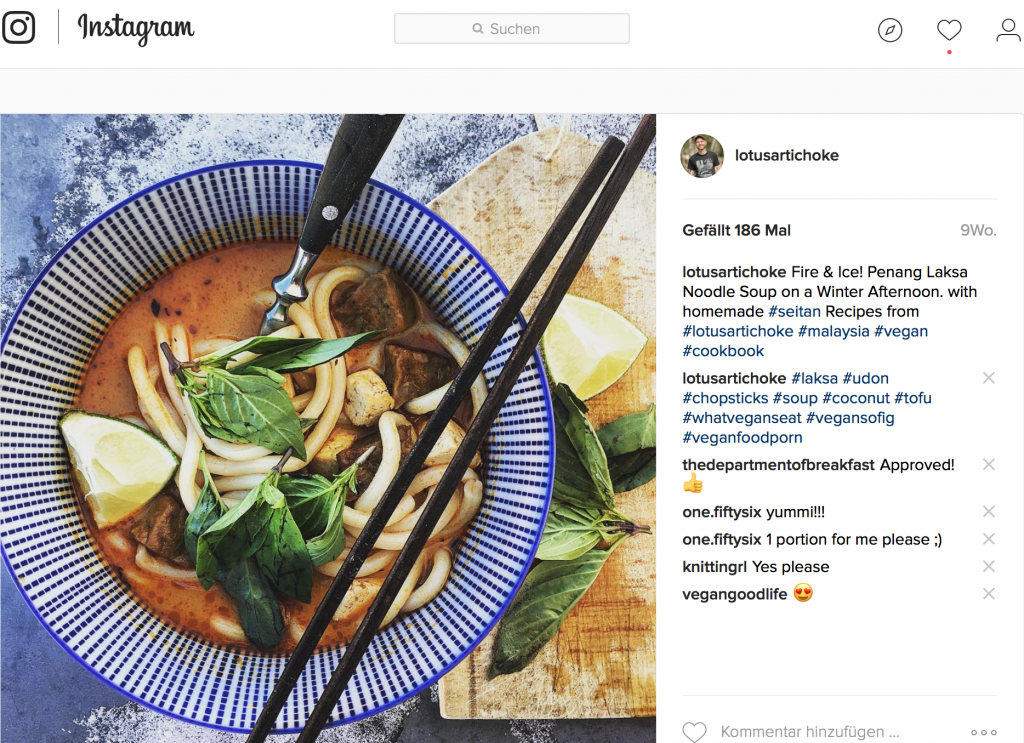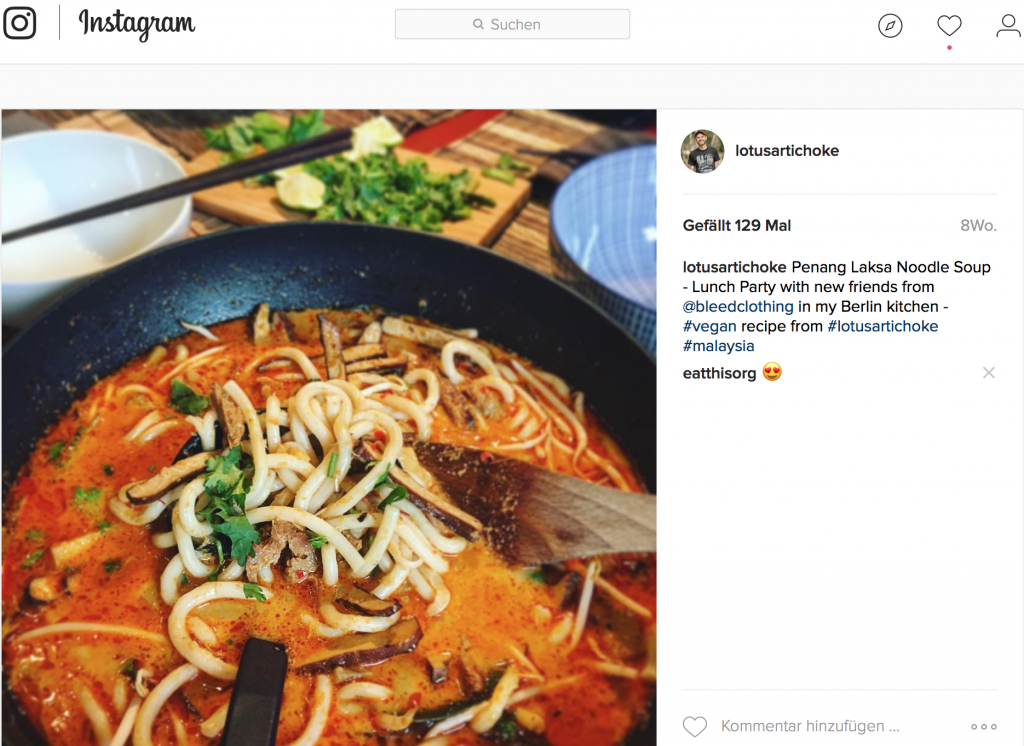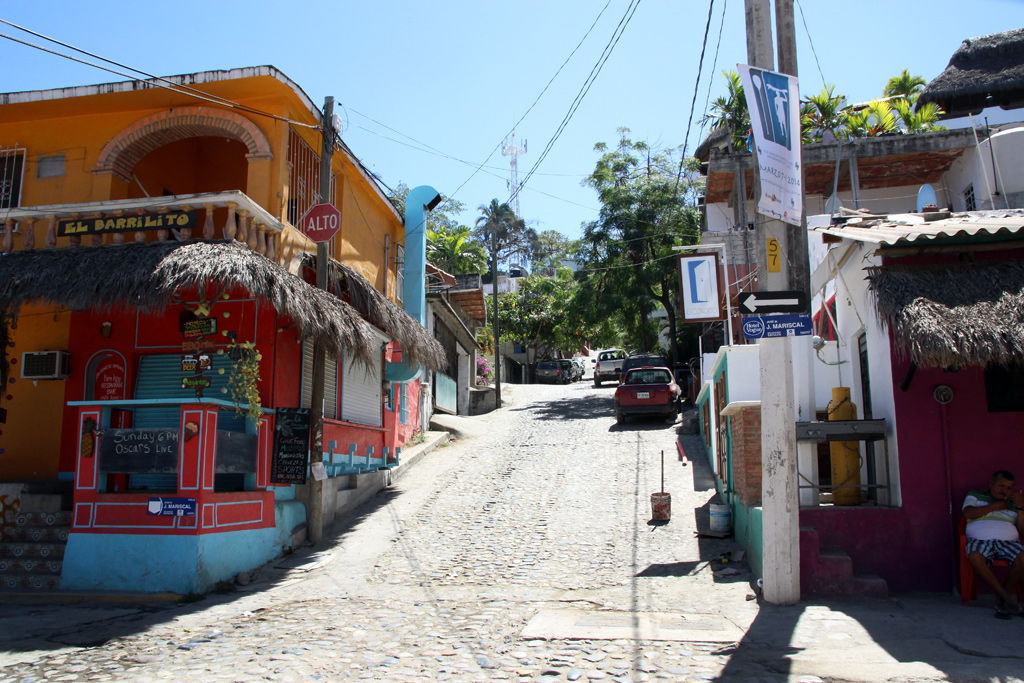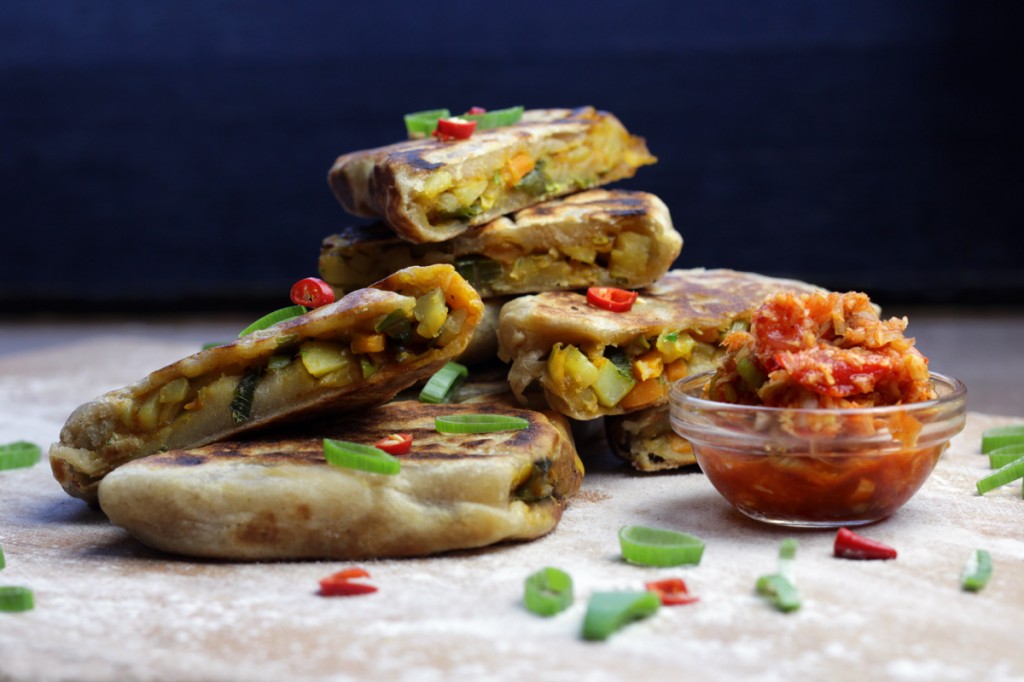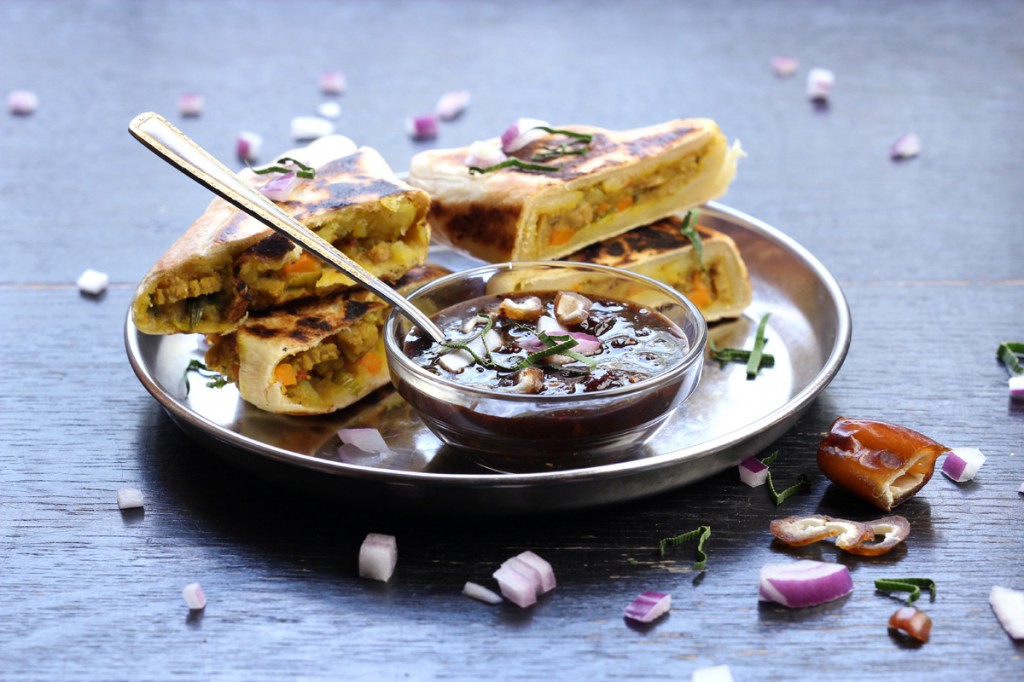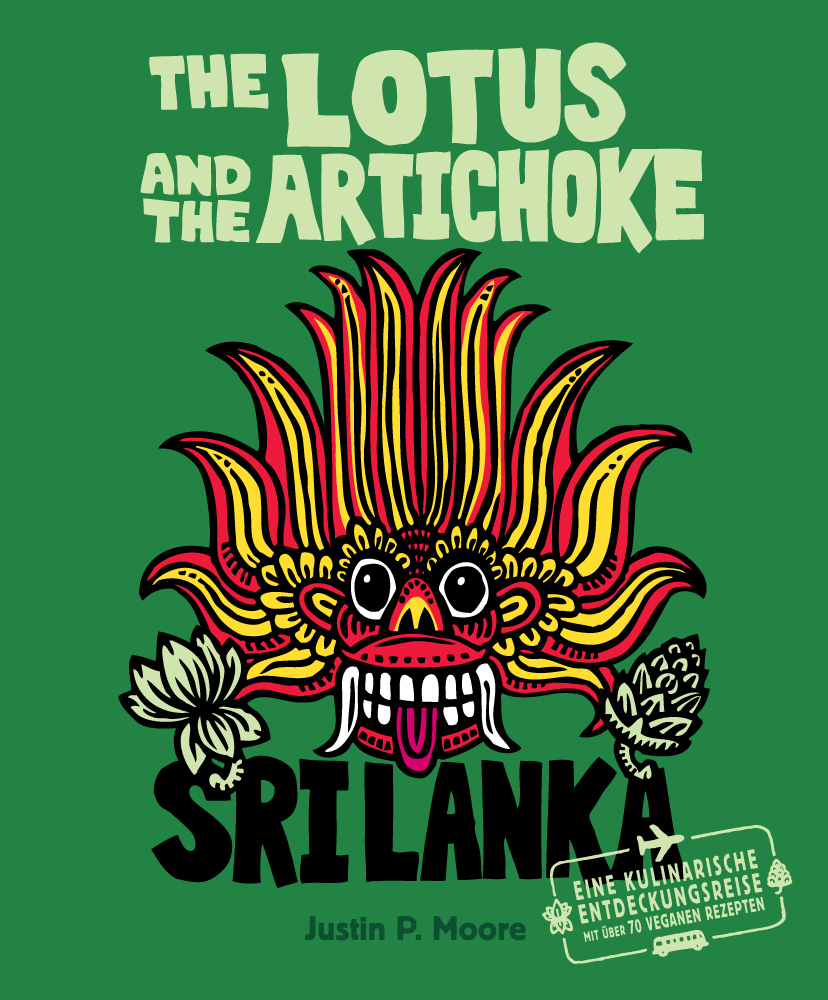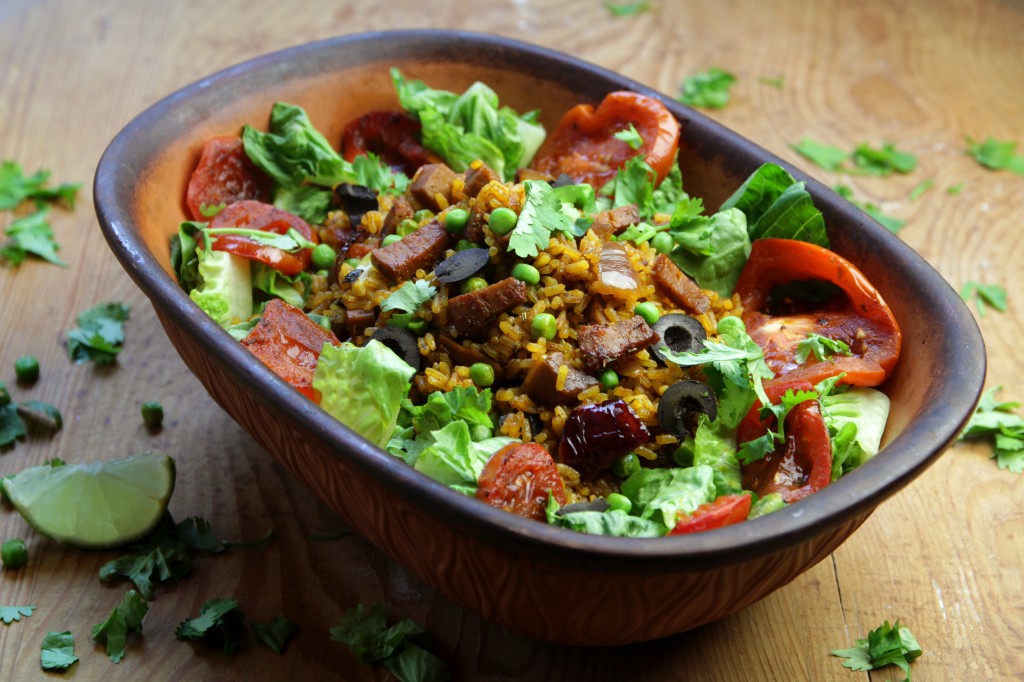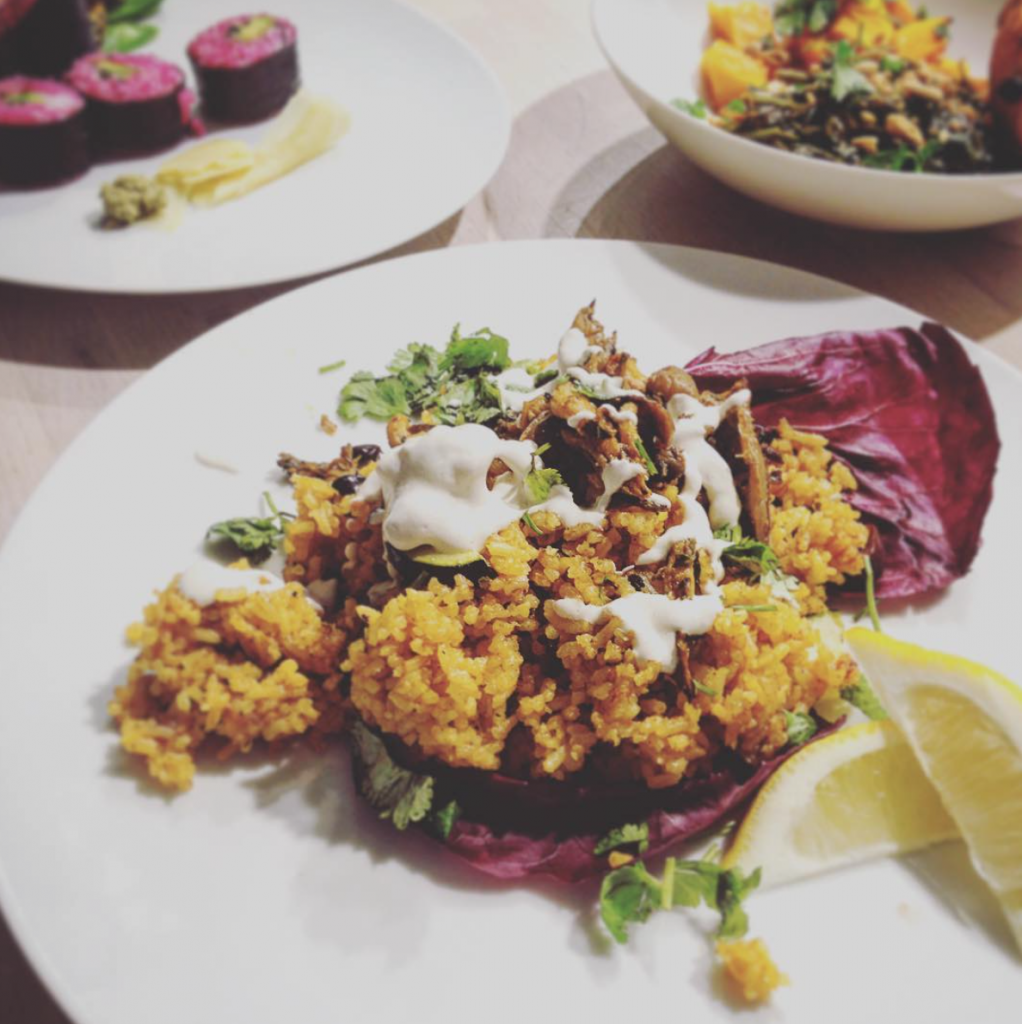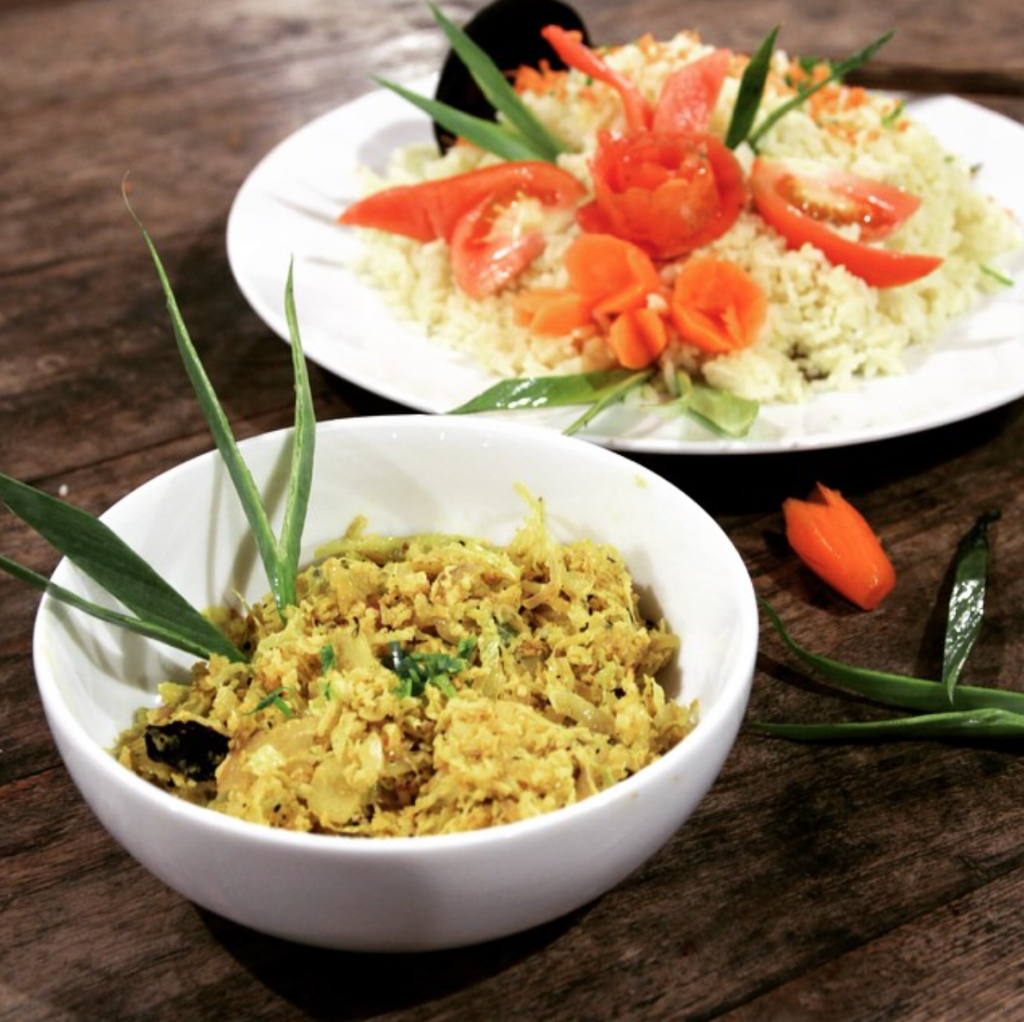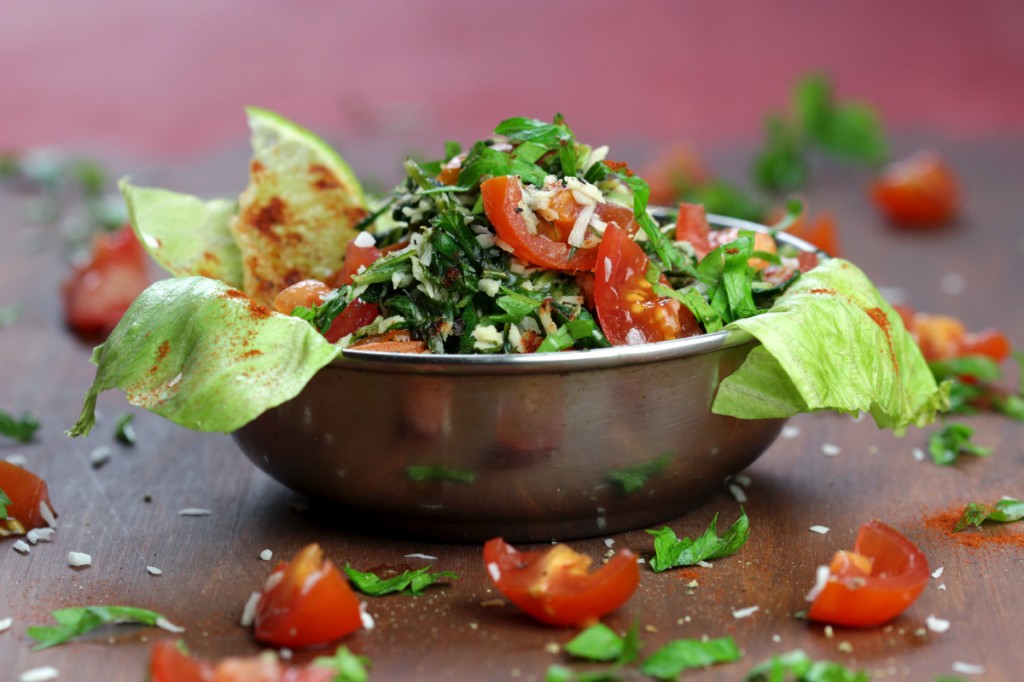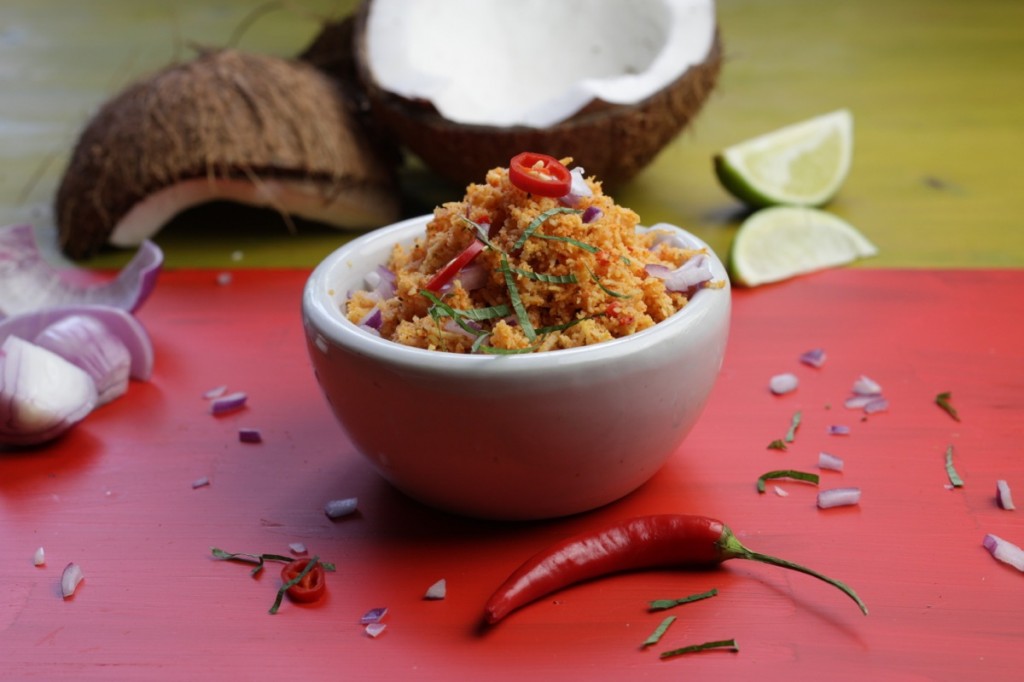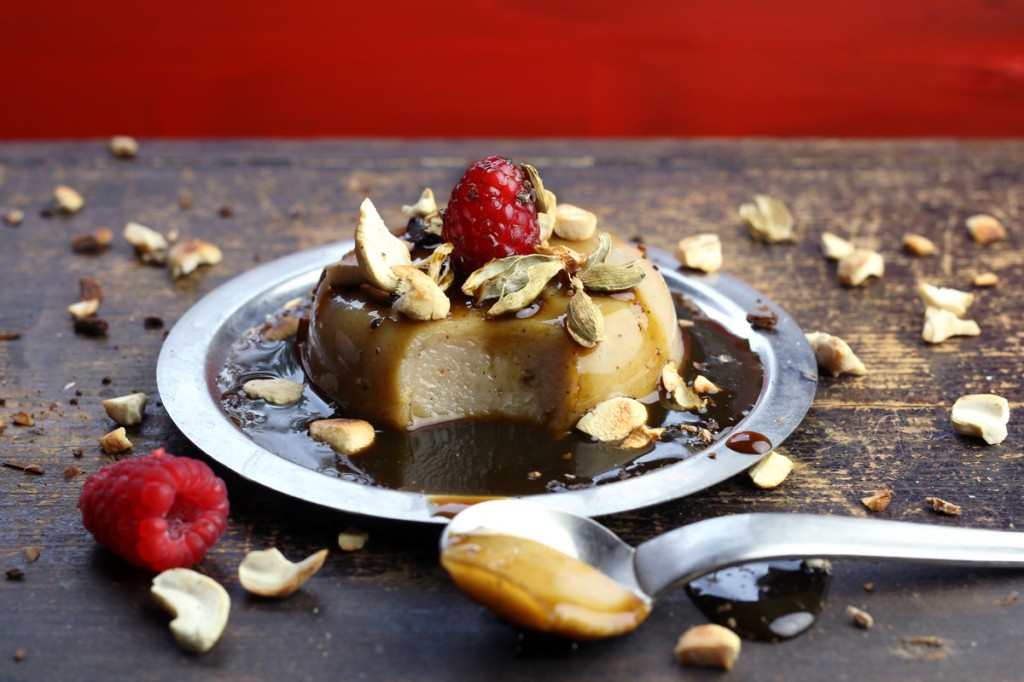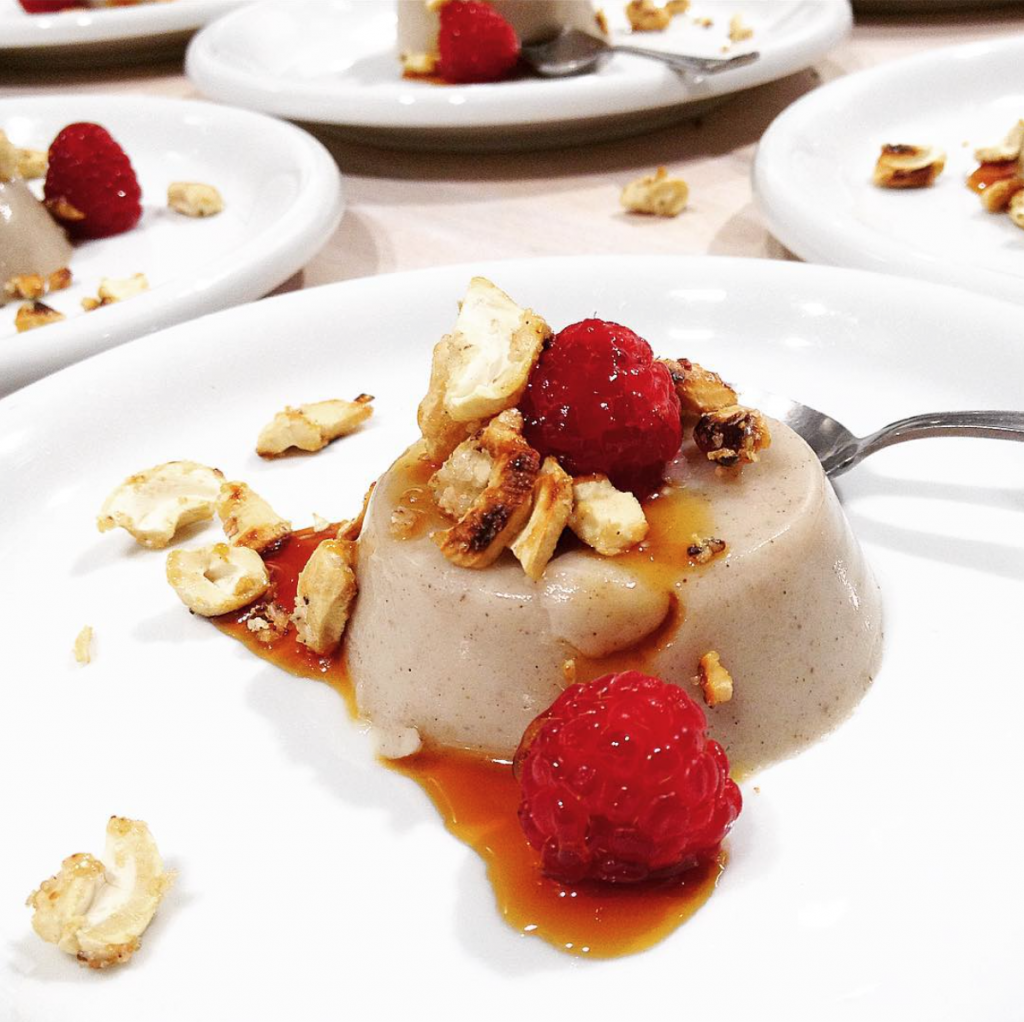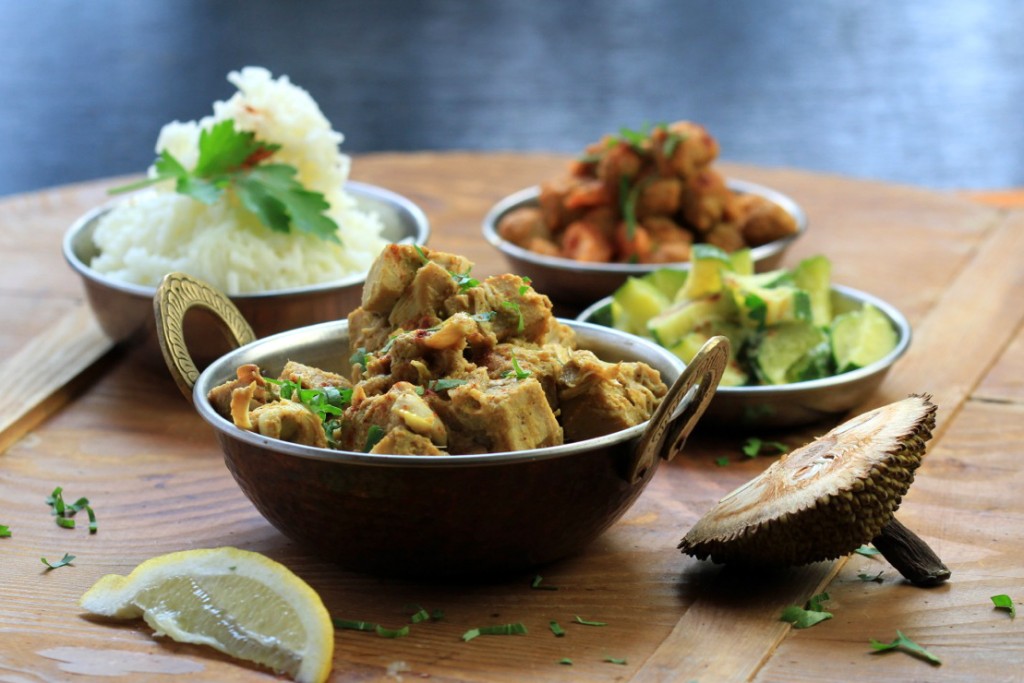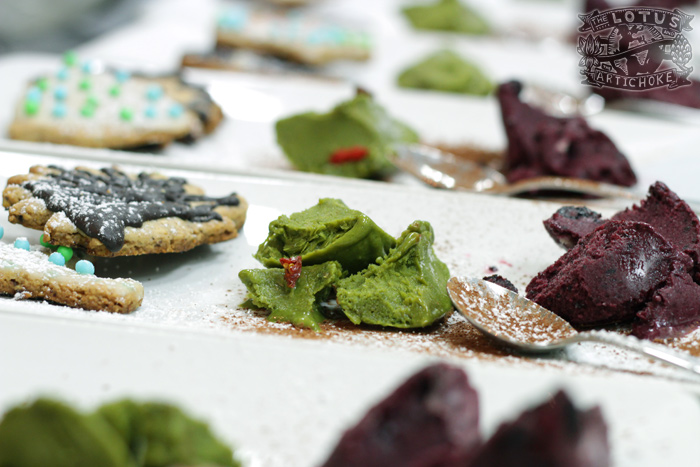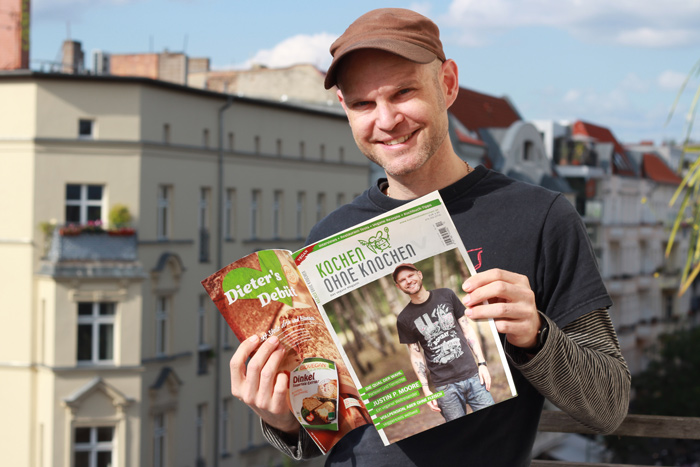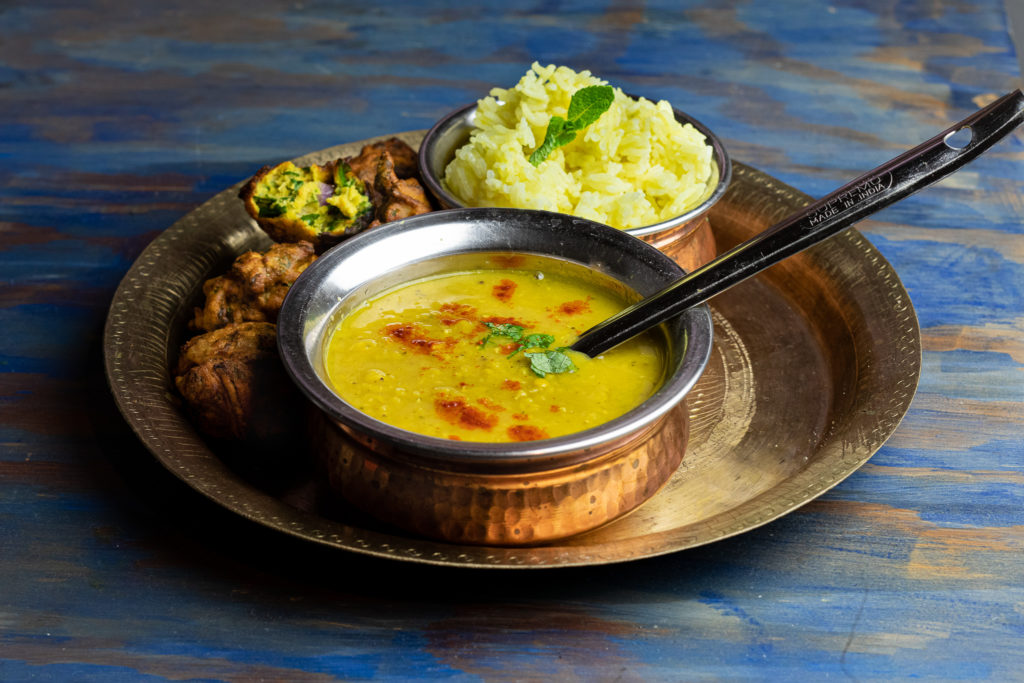
Masoor Dal is one of the most classic and common dishes in Indian cuisine, and there are plenty of reasons for that – it’s easy to make, delicious, is universally loved, goes with just about any thali set meal combo, and is packed with protein and nutrients. Did I mention it’s easy to make? Yeah, it’s simple. And you can make it more simple, or more fancy, as you like. Want more vegetables? Go for it. Other beans? Knock yourself out. In the variations I mention a couple typical twists: You can drop the onion and garlic and make the vedic (sattvic) variation with asafoetida, and/or you can make a more South Indian / Sri Lankan style dal by adding creamy coconut milk – or just 1–2 Tbs coconut cream.
Masoor Dal means red lentils. A lot of times you’ll see it called just Dal, which literally means (wait for it) lentils – but dal served as a dish can be made from any number of legumes, including split red lentils, yellow lentils, pigeon peas (toor dal), mung beans (mung dal), etc.
For any dinner party or special Indian meal I almost always include a Dal dish, and it’s usually this one. In fact, we make this at home at least once a week – it’s quite a family favorite! If you (or the kids) prefer a super smooth dal, cook the lentils for a good long time, adding water gradually to get them really soft, or purée the cooked lentils in a blender and transfer back to the pot.
This dish is very similar to Dal Tadka (or Dal Tarka), also known as Dal Fry – the fried tempering or ‘tadka’ is added to the pot of already cooked lentils towards the end of cooking. Follow that up with salt, lime juice, and chopped fresh coriander or dried fenugreek leaves. If you can find fresh fenugreek leaves, that’s even better… but they are typically tricky (but not impossible) to find outside South Asia.
It’s also possible to fry the spices first in a large pot and then add the (dry) lentils and water, bring it to boil, and cook it all in one pot. I do this sometimes when I’m in a hurry, but adding the fried tempering at the end is definitely more classic and true to the methods taught to me in India by friends, neighbors, and cooks that let me into their kitchens!
Masoor Dal
North Indian red lentils
serves 4 / time 45 min
recipe from The Lotus and the Artichoke – WORLD 2.0
(Rezept auf Deutsch unten)
- 3/4 cup (125 g) red lentils (dried)
- 4 cups (1000 ml) water more as needed
- 1 medium (100 g) tomato chopped
- 1 small (60 g) red onion finely chopped
- 1 clove garlic finely chopped
- 3/4 in (2 cm) fresh ginger finely chopped
- 1 small green chili seeded, sliced optional
- 2 Tbs vegetable oil
- 1 tsp black mustard seeds
- 2 tsp cumin ground
- 1 tsp coriander ground
- 1/4 tsp asafoetida (hing)
- 1 cinnamon stick or 1/4 tsp cinnamon ground
- 4–6 curry leaves or 1 bay leaf
- 3/4 tsp turmeric ground
- 3/4 tsp salt
- 1 Tbs lime juice
- small handful fresh coriander or dried fenugreek leaves for garnish
- Rinse and drain lentils. Bring 3 cups (720 ml) water to boil in a large pot. Add drained lentils.
Return to boil, reduce heat to low, cover, and simmer until lentils are very soft, 15–25 min. - Heat oil in a small pan on medium heat. Add mustard seeds. After they start to pop (20–30 sec),
add chopped onion, garlic, ginger, chili (if using), ground coriander, cumin, asafoetida, cinnamon, and curry leaves or bay leaf. Fry, stirring constantly, until richly aromatic, 2–3 min. - Add fried spices along with chopped tomato, turmeric and salt to pot with cooked lentils.
Return to boil. Simmer 5–10 min, gradually stirring in another 1 cup (240 ml) water (or coconut milk,
see Variations below) or more, as needed. - Remove cinnamon stick and bay leaf (if using). Stir in lime juice. Adjust salt to taste. For an extra
smooth dal, transfer to a blender or use an immersion blender and blend to desired consistency. - Garnish with chopped coriander or fenugreek leaves.
- Serve with basmati rice, naan, or chapati bread.
Variations:
Vedic: Omit onions and garlic, use 1/4 tsp asafoetida (hing), and add 3/4 tsp Garam Masala along with spices. Coconut creamy: Add 1 cup (240 ml) coconut milk instead of water in last steps.
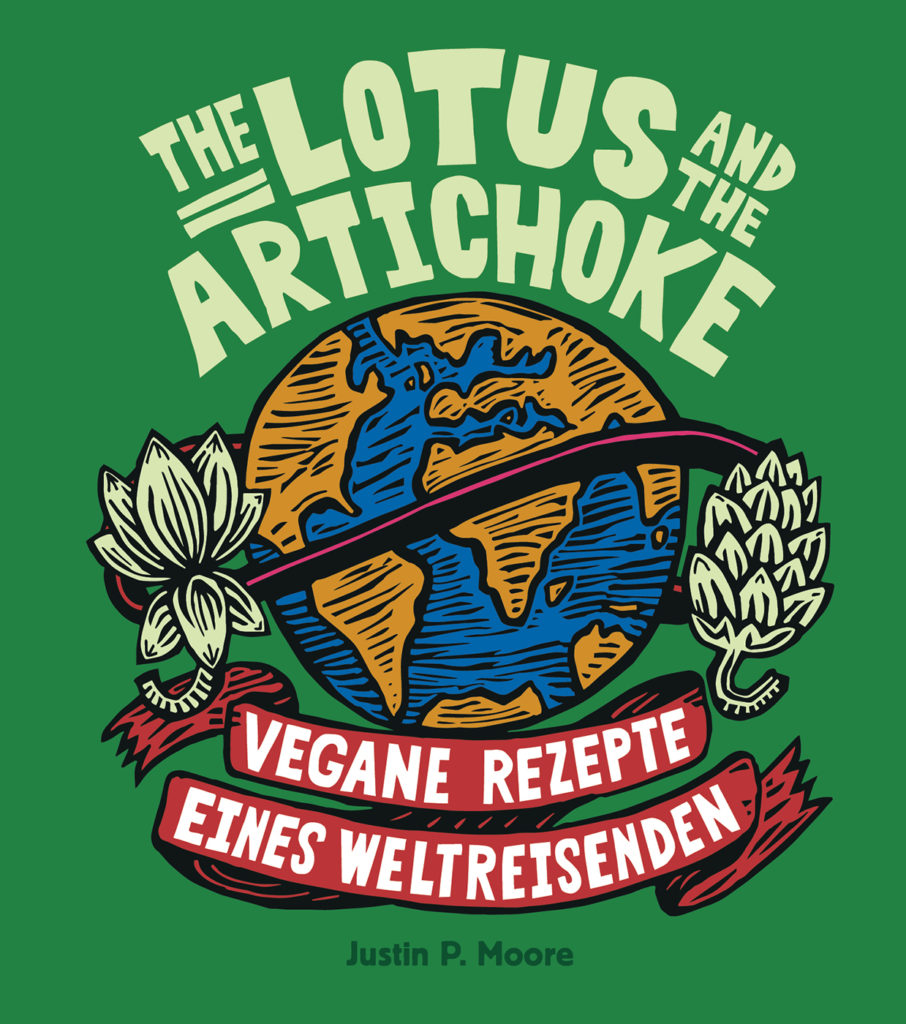

Masoor Dal
Nordindische rote Linsen
4 Portionen / Dauer 45 Min.
Rezept aus The Lotus and the Artichoke – WORLD 2.0
- 3/4 Tasse (125 g) rote Linsen (getrocknet)
- 4 Tassen (1000 ml) Wasser bei Bedarf mehr
- 1 mittelgroße (100 g) Tomate gehackt
- 1 kleine (60 g) rote Zwiebel fein gehackt
- 1 Knoblauchzehe fein gehackt
- 2 cm frischer Ingwer fein gehackt
- 1 kleine grüne Chilischote entsamt, in Scheibchen geschnitten wenn gewünscht
- 2 EL Pflanzenöl
- 1 TL schwarze Senfsamen
- 2 TL Kreuzkümmel gemahlen
- 1 TL Koriander gemahlen
- 1/4 TL Asafoetida (Asant)
- 1 Zimtstange oder 1/4 TL Zimt gemahlen
- 4–6 Curryblätter oder 1 Lorbeerblatt
- 3/4 TL Kurkuma gemahlen
- 3/4 TL Salz
- 1 EL Limettensaft
- 1 kleine Handvoll frisches Koriandergrün
oder getrocknete Bockshornkleeblätter zum Garnieren
- Linsen gründlich waschen und abtropfen lassen. 3 Tassen (720 ml) Wasser in einem großen Topf zum Kochen bringen. Linsen hineingeben und erneut zum Kochen bringen. Flamme niedrig stellen, abdecken und 15 bis 25 Min. köcheln, bis die Linsen sehr weich sind.
- Öl in einer kleinen Pfanne auf mittlerer Flamme erhitzen. Senfsamen hineingeben.
Nach deren Aufplatzen (20 bis 30 Sek.) Zwiebel, Knoblauch, Ingwer, grüne Chilischote (falls verwendet) Koriander, Kreuzkümmel, Asafoetida, Zimt und Curryblätter oder Lorbeerblatt hinzufügen.
2 bis 3 Min. rösten, bis es aromatisch duftet. - Geröstete Gewürze, Tomate, Kurkuma und Salz in den Topf mit den Linsen geben. Zum Kochen bringen,
Flamme niedrig stellen und 5 bis 10 Min. köcheln. Dabei nach und nach 1 Tasse (240 ml) Wasser
(oder Kokosmilch, siehe Variationen) oder bei Bedarf mehr einrühren. - Zimtstange und Lorbeerblatt (falls verwendet) entfernen und Limettensaft einrühren. Abschmecken und auf Wunsch nachsalzen. Für ein extra cremiges Dal die Suppe in einem Mixer oder mit einem Pürierstab direkt im Topf pürieren, bis die gewünschte Konsistenz erreicht ist.
- Mit frischem gehacktem Koriandergrün oder Bockshornkleeblättern garnieren und mit
Basmati-Reis, Naan oder Chapati (Roti) servieren.
Variationen:
Vedisch: Statt Zwiebel und Knoblauch 1/4 TL Asafoetida (Asant) verwenden und 3/4 TL Garam Masala zusammen mit den anderen Gewürzen zugeben. Cremig mit Kokosnuss: Statt 1 Tasse (240 ml) Wasser bei den letzten Schritten 1 Tasse (240 ml) Kokosmilch einrühren.



